Pawns are quite underrated in Chess, aren’t they? Though having just one point in value, there are plenty of games that are won simply because of one precise pawn move.
Note: One push of a pawn can make or break (pun intended) an advantage.
There are a variety of elements related to pawns that are studied in Chess. Pawn structures, passed pawns, pawn endgames, pawn sacrifices, gambits, and many more. One such important area of study is the use of pawn breaks.
So what is a pawn break? It is basically any pawn move that attempts to disrupt the opponent’s structure in some way or the other. It has multiple applications and there are specific positions where it can be most useful.
Read this article further to know all there is about pawn breaks.
What is a pawn break?
To explain it very simply, a pawn break in chess is when a pawn move is made with the purpose of challenging the opponent’s structure in some way or the other.
However, the best way to learn it is by understanding it with an example. Take a look at this position.
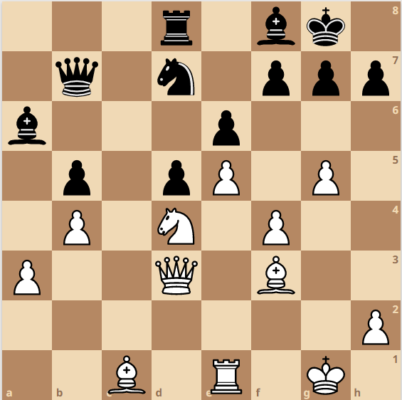
In the above position, White is in an attacking position. However, at the present moment, the pawn structure is quite closed. White needs to strategically “break” through to convert his advantage into a win. So White decided to play this.
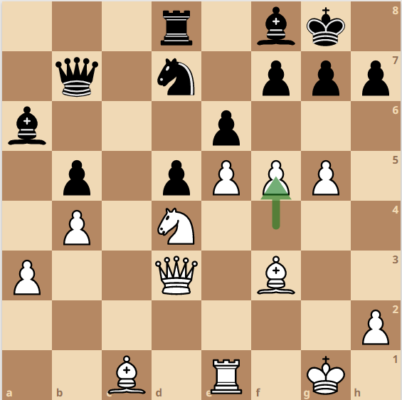
27. f5!
Attacking and attempting to break Black’s pawn structure, White also opens up space for his own bishop on c1 and other possibilities.
This is just one of the many purposes of pawn breaks. Let’s have a look at some others.
8 Ways You Can Use Pawn Breaks
So what exactly is the purpose of pawn breaks?
Though they might seem like simple moves, pawn breaks usually have the power to create some sort of disruption in the opponent’s camp. Be it the pawn structure or the piece placement, these quiet pawn moves can wreak some serious havoc!
So let us take a look at some of the reasons to initiate a pawn break.
1. To create a weakness
A pawn break can be used to create a weak square, a weak pawn, or to weaken your opponent’s structure.
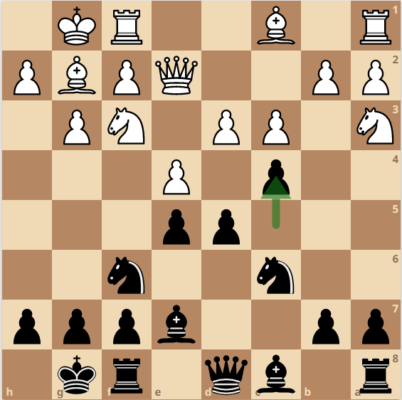
In this position, Black’s 1…c4 creates problems for White as after 2. dxc4 dxe4 3. Nd2 Bxa3 4. bxa3, the resulting position has too many weaknesses in White’s camp.
2. To disturb your opponent’s pawn structure
If your opponent has a strong hold over the position with an excellent pawn structure, a pawn break can be especially useful here to create problems for your opponent.
3. To destabilize your opponent’s control over the center
Sometimes it does happen that during development, one side tends to gain more control over the centre temporarily. A pawn break can be an important resource to challenge this control.
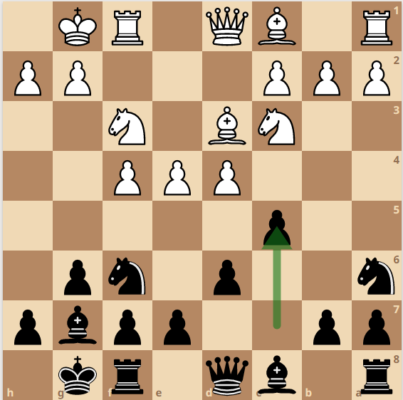
In this position, Black challenges white’s central pawn dominance by playing c5.
4. To gain a better position as compensation
Though this can also be called a gambit or sacrifice, sometimes pawn breaks are used as temporary sacrifices to free one’s position or gain some compensation.
5. To force opponent to decide whether he wants to maintain the tension or exchange pawns
Especially in the case of Queen’s gambit where White has a pawn on c4 that isn’t immediately exchanged with Black’s d5 pawn, a pawn break on b5 can be useful to force White to make a committal move.
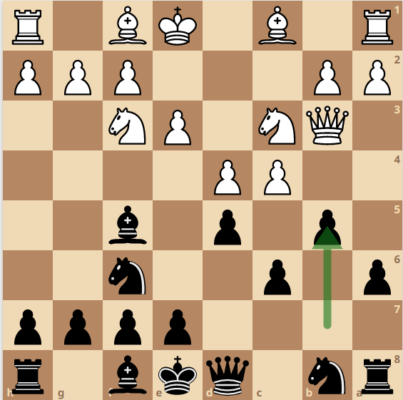
As you can see, White now has to decide whether to exchange with the ‘d’ or ‘b’ pawn. Either way, his challenging ‘c4’ pawn is now out of the way.
6. To pursue an attack and convert a better position into a win
Sometimes the stage is set for the final showdown but due to the closed or positional nature of the current position, one is unable to deliver the final blow. In such circumstances, a pawn break can be the necessary push your attack needs.
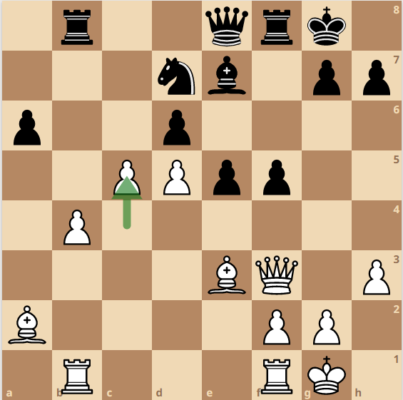
In this position, c5 serves as an excellent way to push the pawn further to c6 and create a protected passed pawn. Due to White’s d6+ coming after dxc5, Black cannot accept the exchange.
7. Can be very helpful in winning the game in the endgames
In endgames, players often have very few pieces on board. Even then, playing them can be very tricky. Especially pawn endgames. A single right or wrong move can make or break the game. Hence, knowing the different types of breaks available is super useful.
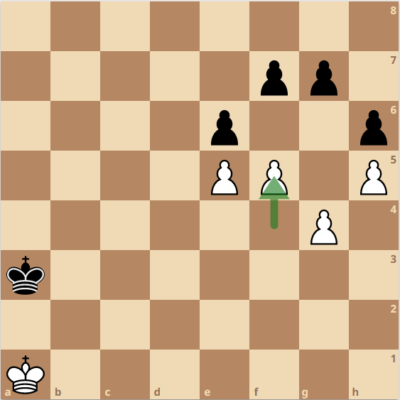
At first glance, this position can look pretty equal. However, if you take a closer look, you will realize that White is winning. The simple f5 pawn break is devastating for Black. If Black plays exf5, then White’s idea will be gxf5, followed by e6. If Black chooses to ignore White’s move and proceed with a move like Kb3, White will continue with f6, and after gxf6 exf6, White simply wins after g5.
8. To gain space for your pieces
When the position is of a closed nature and you don’t really have a lot of squares to manoeuvre your pieces to, a pawn break can be quite freeing. Not only can it force exchanges, it can also lessen the space for your opponent.
Due to such varied uses, one should actively look for good pawn breaks. Their correct application can really save or help your game in a very important way.
A famous ending based on pawn breaks that every chess player must know
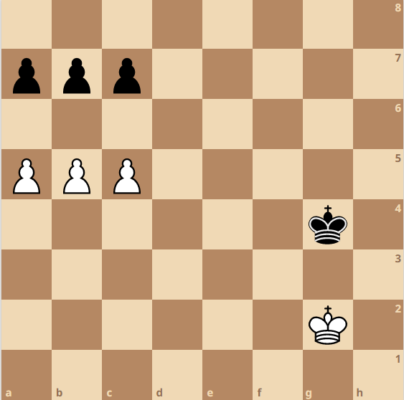
It is very natural for beginners to think that this position is very close to a draw as there are very few pieces left on board and no attacking possibilities. However, knowledge of such important positions comes very handy sometimes! You’d be surprised to know that this position is actually winning for White!
White plays 1. b6 and Black has two options.
Option 1 is 1… axb6 2. c6! Clearing the path for White’s a pawn.
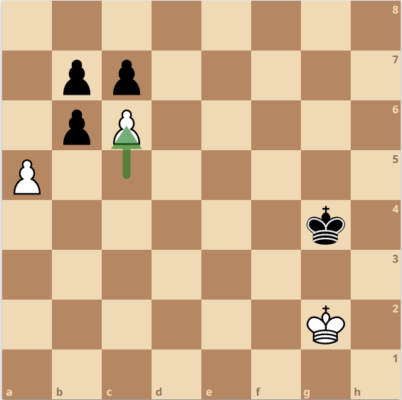
Black immediately loses as after 2… bxc6, White plays 3. a6 and shortly promotes the pawn to a Queen.
Similarly for option 2, if Black plays 1… cxb6, White will continue with 2.a6, clearing the path for the ‘c’ pawn. After 2… bxa6, 3.c6 simply wins!
Conclusion
Pawns are the essential but tricky part of your army. The fact that once they move ahead, they cannot come backwards unlike other pieces, is what differentiates them and makes pawns unique!
As we saw in this article, pawn breaks are a great way to improve your position in multiple ways. Understanding when and how to spot such a break is very crucial. This understanding is guided by the many purposes that such moves have.
If you actively learn how to deal with pawn structures, pawn breaks, pawn sacrifices and gambits, you can gain a significant advantage based on this knowledge. Pawns are often less focused upon yet very crucial to the game. Hence, studying about them can give you an additional edge.

